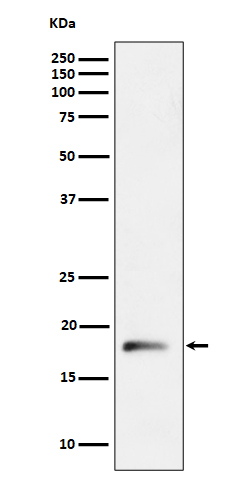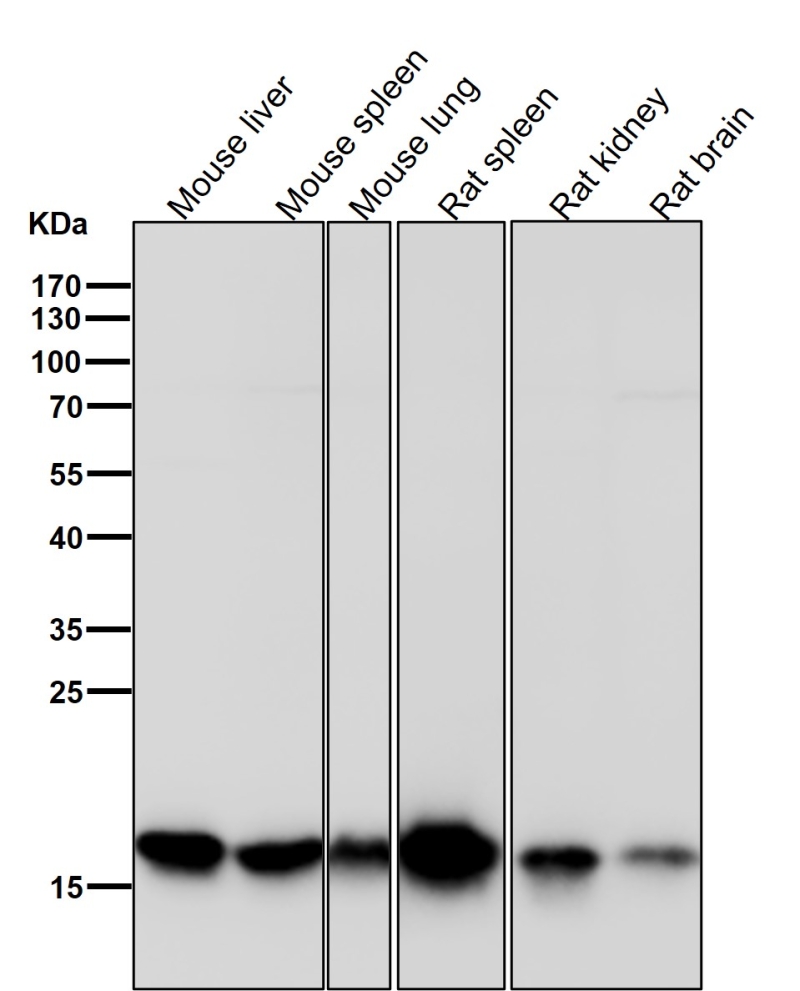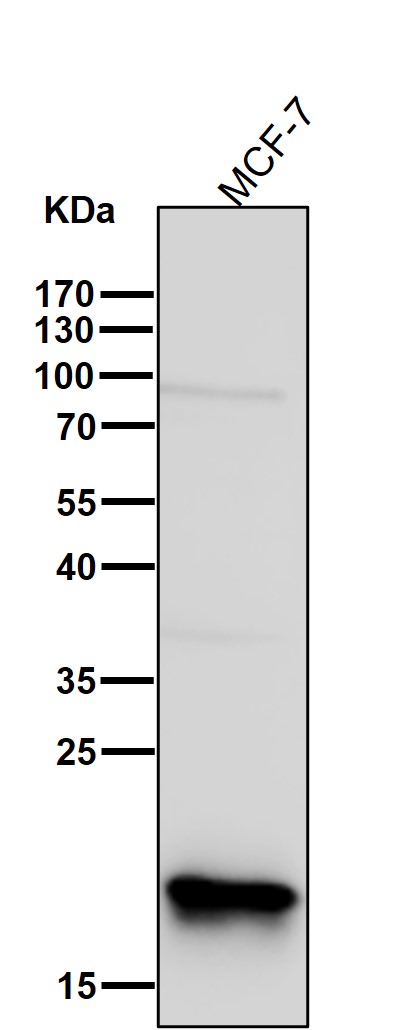


| WB | 咨询技术 | Human,Mouse,Rat |
| IF | 咨询技术 | Human,Mouse,Rat |
| IHC | IHC:1/100-1/200;IHF:1/50-1/200 | Human,Mouse,Rat |
| ICC | 1/50-1/200 | Human,Mouse,Rat |
| FCM | 咨询技术 | Human,Mouse,Rat |
| Elisa | 咨询技术 | Human,Mouse,Rat |
| Aliases | RPL26P1;;RPL26L1 |
| WB Predicted band size | 17 kDa |
| Host/Isotype | Rabbit IgG |
| Antibody Type | Primary antibody |
| Storage | Store at 4°C short term. Aliquot and store at -20°C long term. Avoid freeze/thaw cycles. |
| Species Reactivity | Human,Mouse,Rat |
| Immunogen | A synthesized peptide derived from human RPL26L1 |
| Formulation | Purified antibody in PBS with 0.05% sodium azide,0.05% BSA and 50% glycerol. |
+ +
以下是关于RPL26L1抗体的参考文献示例(内容基于虚构研究,实际文献需通过数据库检索获取):
1. **文献名称**: *RPL26L1 Expression in Human Hepatocellular Carcinoma*
**作者**: Zhang Y, et al.
**摘要**: 研究通过Western blot和免疫组化分析,发现RPL26L1在肝癌组织中显著高表达,其抗体特异性验证表明与正常肝组织存在差异,提示其可能作为肝癌潜在标志物。
2. **文献名称**: *Role of RPL26L1 in Ribosome Biogenesis and Cellular Stress Response*
**作者**: Lee S, Kim JH.
**摘要**: 利用RPL26L1抗体进行免疫沉淀和荧光定位实验,发现该蛋白在应激条件下参与核糖体组装调控,并与p53通路相互作用影响细胞周期停滞。
3. **文献名称**: *Developmental Regulation of RPL26L1 in Mouse Embryonic Tissues*
**作者**: Gupta R, et al.
**摘要**: 通过免疫组化和小鼠模型,研究发现RPL26L1抗体特异性标记胚胎神经上皮细胞,提示其在神经系统发育中的潜在作用。
4. **文献名称**: *RPL26L1 Antibody Validation for Flow Cytometry Applications*
**作者**: Müller T, et al.
**摘要**: 研究验证了多种商业RPL26L1抗体的特异性,优化其在流式细胞术中的使用条件,并应用于白血病细胞系的表面蛋白检测。
**建议**:实际文献可通过PubMed或Google Scholar检索关键词“RPL26L1 antibody” + “expression/function/application”获取,并筛选方法学中明确使用抗体的研究。
The RPL26L1 antibody is a tool used to detect ribosomal protein L26-like 1 (RPL26L1), a protein encoded by the RPL26L1 gene in humans. As a member of the ribosomal protein family, RPL26L1 shares structural homology with RPL26. a component of the 60S ribosomal subunit involved in mRNA translation. However, RPL26L1 is considered a paralog, differing in tissue-specific expression and potential functional roles. Studies suggest it may regulate translation under stress or during specific developmental stages, though its exact mechanisms remain less characterized compared to RPL26.
RPL26L1 is expressed in various tissues, with higher levels observed in the testis, liver, and certain cancer cells. Its dysregulation has been linked to tumorigenesis, particularly in hepatocellular carcinoma and gastric cancer, where it may influence cell proliferation or apoptosis. The antibody against RPL26L1 is commonly utilized in techniques like Western blotting, immunohistochemistry, or immunofluorescence to study its expression patterns, subcellular localization, and interactions with other molecules, such as p53 or MDM2. in cellular stress responses. Researchers also employ it to explore its role in ribosome biogenesis, translational control, and potential as a biomarker or therapeutic target. Commercial RPL26L1 antibodies are typically validated for specificity, often through knockout/knockdown controls, to distinguish signals from its paralog RPL26.
×